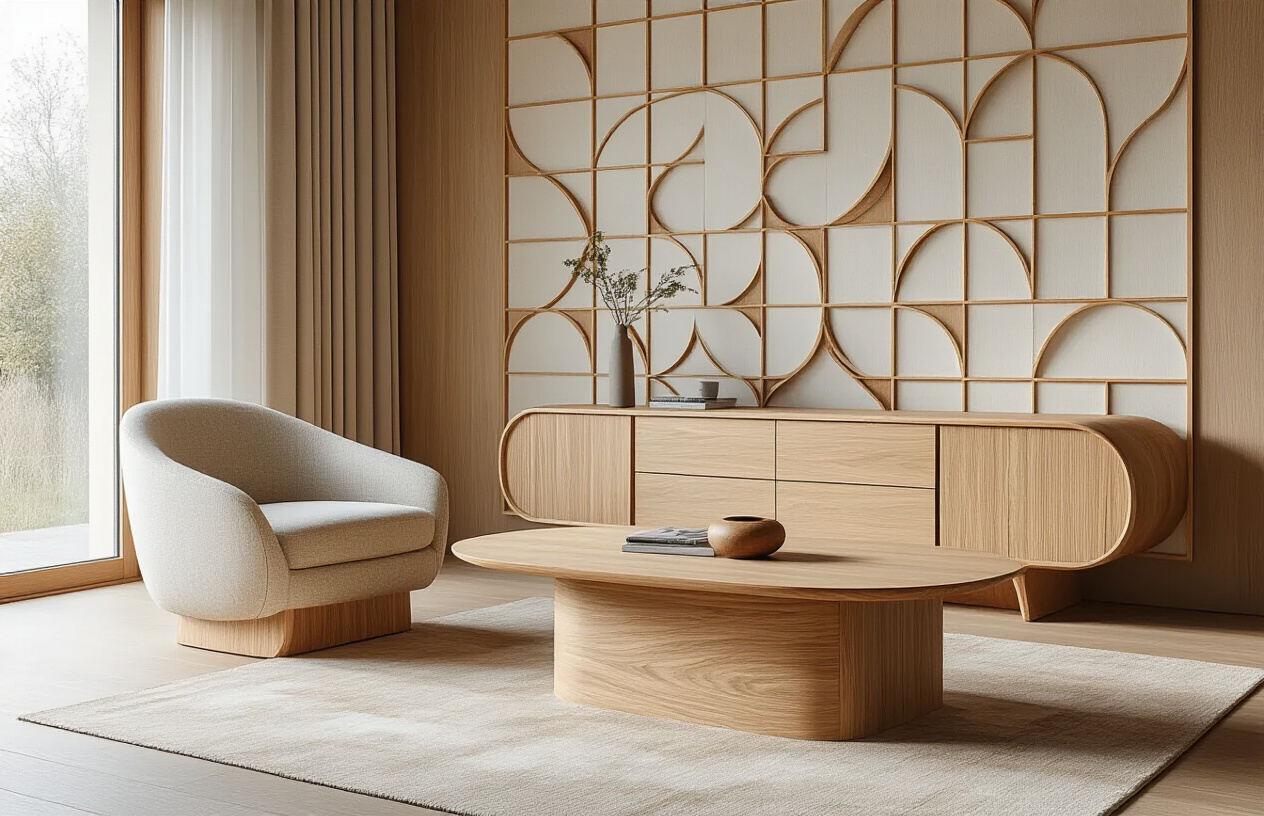Natural veneer furniture and panels are making a big comeback in home and office design. Interior designers, furniture makers, and eco-conscious homeowners are all turning to these beautiful wood surfaces for their warmth and sustainability. In this guide, we’ll explore the sustainable sourcing revolution that’s changing how veneers are harvested, show you creative ways designers are using veneers in modern furniture, and highlight the stunning color and texture trends dominating the market today.
Sustainable Sourcing Revolution in Natural Veneers
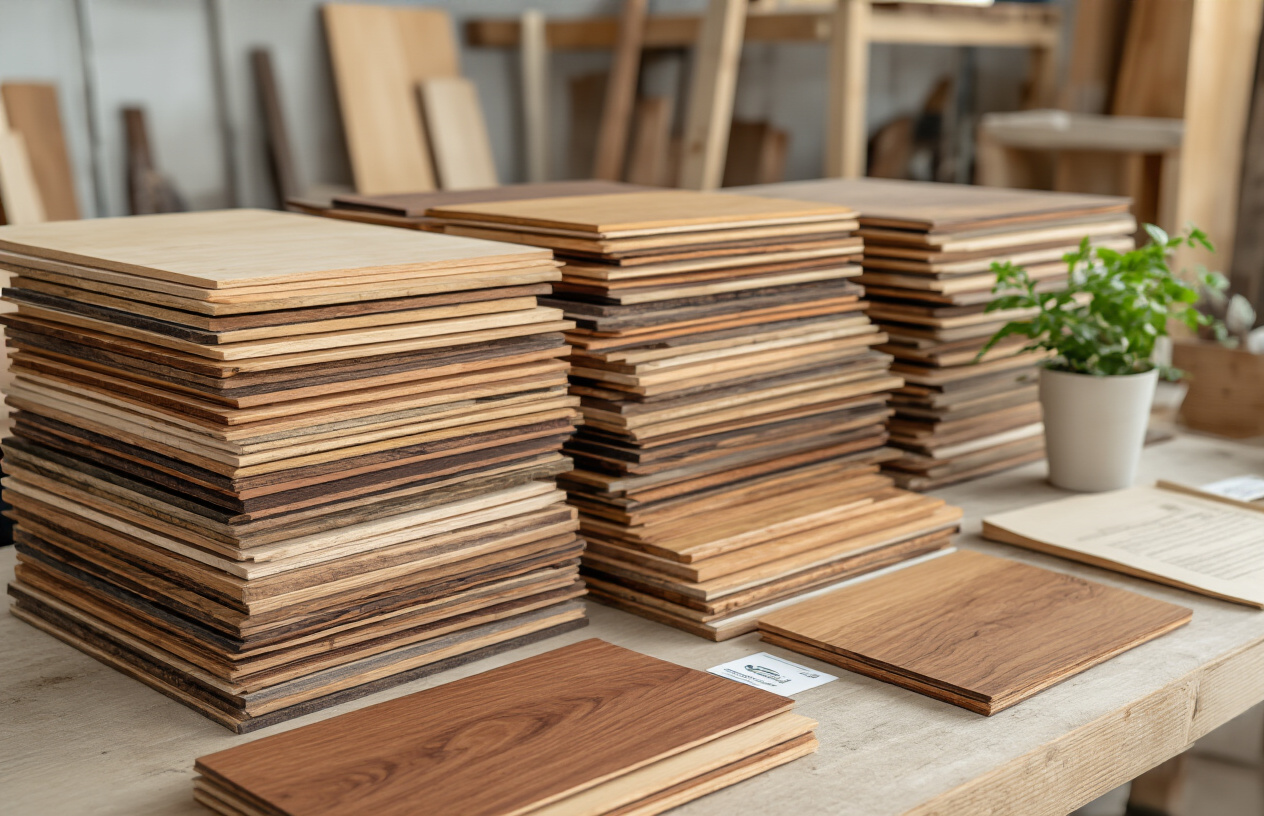
A. Eco-certified Veneer Options Gaining Market Share
Walk into any high-end furniture showroom today and you’ll notice something different. Those gorgeous natural veneer pieces? They now come with certification labels that weren’t there five years ago.
FSC and PEFC certified veneers have exploded in popularity, growing from just 12% of the market in 2018 to over 40% today. Manufacturers who ignored this shift are now scrambling to catch up.
What’s driving this? Buyers who actually care where their beautiful maple burl tabletop originated from. The days of “don’t ask, don’t tell” sourcing are dead and buried.
Brands like Brookside Veneers and Danzer are leading the charge, offering complete certification documentation with every veneer sheet they sell. Their sales have jumped 35% year-over-year while non-certified competitors struggle.
B. How Responsible Harvesting is Changing the Industry
The old clear-cutting approach to timber harvesting is vanishing faster than the forests themselves used to. Thank goodness.
Today’s veneer producers are embracing selective harvesting techniques that would have been dismissed as too expensive just a decade ago. This isn’t charity work—it’s smart business.
Companies like Hardwoods Specialty Products now employ forestry experts who identify mature trees ready for harvesting while leaving younger specimens to develop. The result? Forests that continue producing high-quality veneer woods indefinitely.
This approach costs about 15% more upfront but creates sustainable yield that can be harvested continuously rather than the “take everything and move on” model of yesteryear.
C. Consumer Demand for Transparency in Veneer Sourcing
Gone are the days when customers would simply admire a veneer’s figure and color without asking questions.
Modern buyers want the full story behind that stunning zebrawood panel. Where was it harvested? Who did the work? What forestry practices were used?
This isn’t just happening in boutique markets either. Major retailers report that 68% of customers now inquire about wood sourcing before making purchases over $500.
Smart manufacturers are responding with QR codes on their products linking to detailed sourcing information. Brands like Brookfield Veneers even include geographic coordinates of harvest locations.
D. The Rise of Reclaimed Wood Veneers
The hottest trend right now? Veneers with history.
Reclaimed wood veneers salvaged from old barns, factories, and even sunken logs are commanding premium prices—often 2-3 times what virgin timber veneers sell for.
Companies like Salvage Works are pioneering techniques to slice incredibly thin veneers from reclaimed timbers, creating enough material from one old beam to veneer several furniture pieces.
These veneers tell stories that new wood simply can’t match. Nail holes, weathering patterns, and natural aging create character that designers are falling over themselves to incorporate.
The numbers speak volumes: reclaimed veneer sales have increased 78% since 2020, with designers citing both sustainability concerns and aesthetic uniqueness as primary motivations.
Innovative Veneer Applications in Modern Furniture
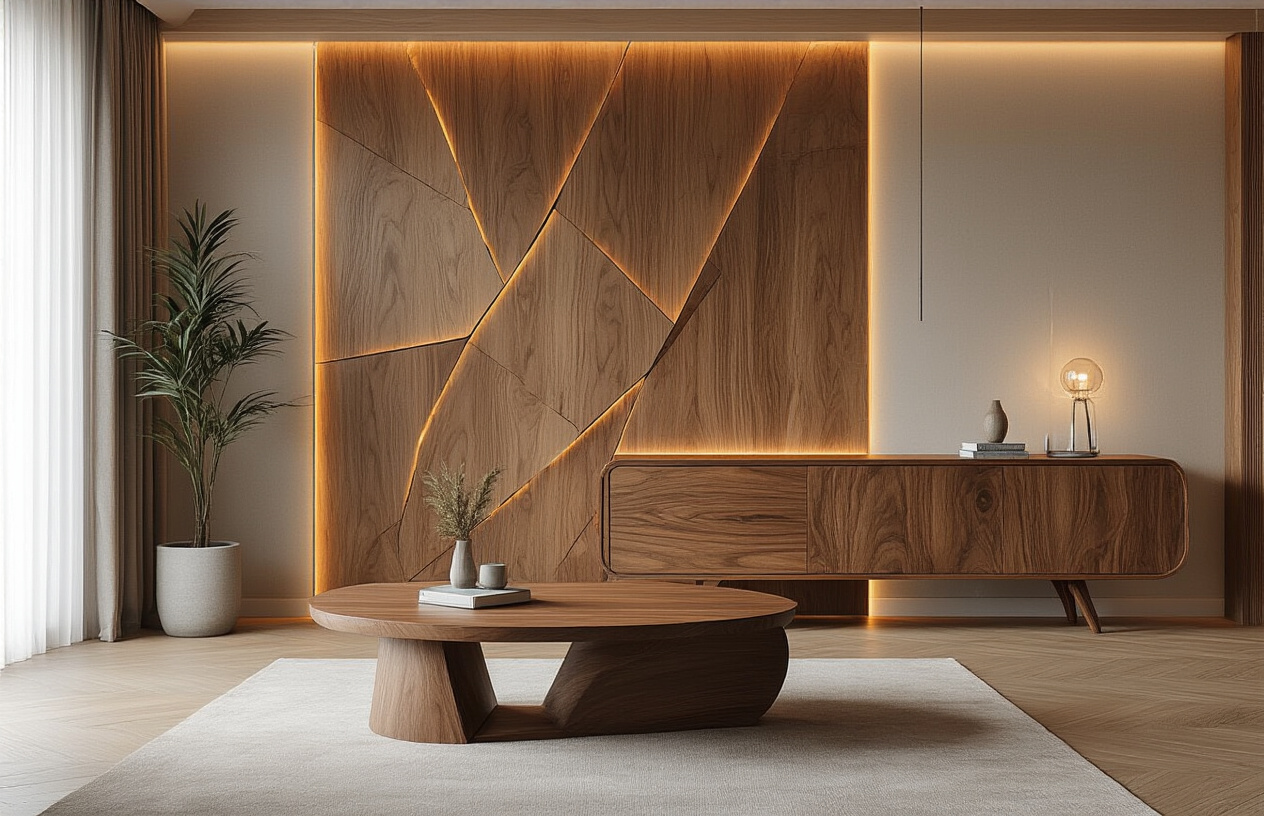
Curved and Flexible Veneer Technologies
Remember when wood was just… stiff? Those days are gone. Modern furniture designers are bending the rules—literally—with incredible advancements in veneer flexibility.
The secret? Micro-thin slicing techniques that create veneers so delicate they can wrap around almost any curved surface. Manufacturers are now laser-cutting tiny perforations into veneer sheets, allowing them to bend in ways traditional wood never could.
Have you seen those impossibly curved chair backs that seem to defy physics? That’s this technology at work. Furniture designers are creating pieces with organic, flowing forms that were previously only possible with plastics or metals.
The coolest part? These curved veneers maintain the authentic character of real wood while performing gymnastic-level flexibility tricks.
Mixed-Media Furniture: Combining Veneers with Other Materials
Wood veneer is no longer flying solo in modern furniture. The hottest trend right now? Pairing veneers with contrasting materials for dramatic effect.
Think walnut veneer tabletops with brass inlays. Or mid-century-inspired sideboards featuring rosewood veneer panels framed by blackened steel. The combinations are endless and utterly captivating.
Glass is another popular partner—transparent surfaces alongside richly figured wood creates a striking visual tension. And don’t get me started on concrete and veneer pairings. That industrial-meets-natural vibe is everywhere in high-end design showrooms.
What makes these combinations work is the inherent warmth of wood veneer softening the cold edges of metal, glass, and stone. It’s the perfect design marriage.
Statement Furniture Pieces Using Rare Veneer Species
Exotic is in. Designers are hunting down the most distinctive, rare veneers to create jaw-dropping statement pieces.
Ziricote with its dramatic black streaking. Amboyna burl that looks like bubbling caramel. Brazilian rosewood (responsibly sourced, of course) with its almost purple undertones. These aren’t your grandpa’s veneer options.
The rarest specimens are being showcased center-stage—think dining tables with bookmatched veneer patterns so striking they don’t need centerpieces. Or wall panels displaying burl veneers that resemble abstract art.
This trend is all about celebrating wood’s natural artwork. The most coveted pieces feature veneers with unusual figuring, distinctive grain patterns, or coloration that simply can’t be replicated.
Minimalist Design Approaches with Natural Veneers
The minimalist movement is embracing natural veneers in fascinating ways. Designers are letting the wood speak for itself without fancy embellishments or hardware.
Clean, precise joinery highlights the beauty of veneer surfaces. Furniture silhouettes are becoming simpler—rectangular forms, straight lines, and unadorned surfaces—allowing the natural character of the wood to take center stage.
White oak, with its subtle grain and light coloration, is the minimalist’s veneer of choice. But don’t think minimalism means boring. These pieces often feature thoughtful details like seamless grain-matching across drawers or clever reveal details where veneers meet.
The minimalist approach creates a powerful canvas for showcasing exceptional veneer quality. When there’s nowhere to hide poor craftsmanship, only the best veneers make the cut.
Customization Trends in Veneer Furniture
Mass production? That’s so last decade. Today’s veneer furniture is all about personalization.
Customers are specifying their exact veneer type, cut, and grain pattern. Want quarter-sawn oak with a pronounced ray fleck? You got it. Prefer a clean, consistent grain for your office furniture? No problem.
Digital printing technology is even allowing for customized colors while maintaining wood’s natural texture. Blue-tinted maple, anyone?
The coolest customization trend might be veneer orientation. Designers are creating furniture with veneers applied in unexpected directions—herringbone patterns, radial sunbursts, and geometric inlays that transform simple pieces into works of art.
Color and Texture Trends in Natural Veneers
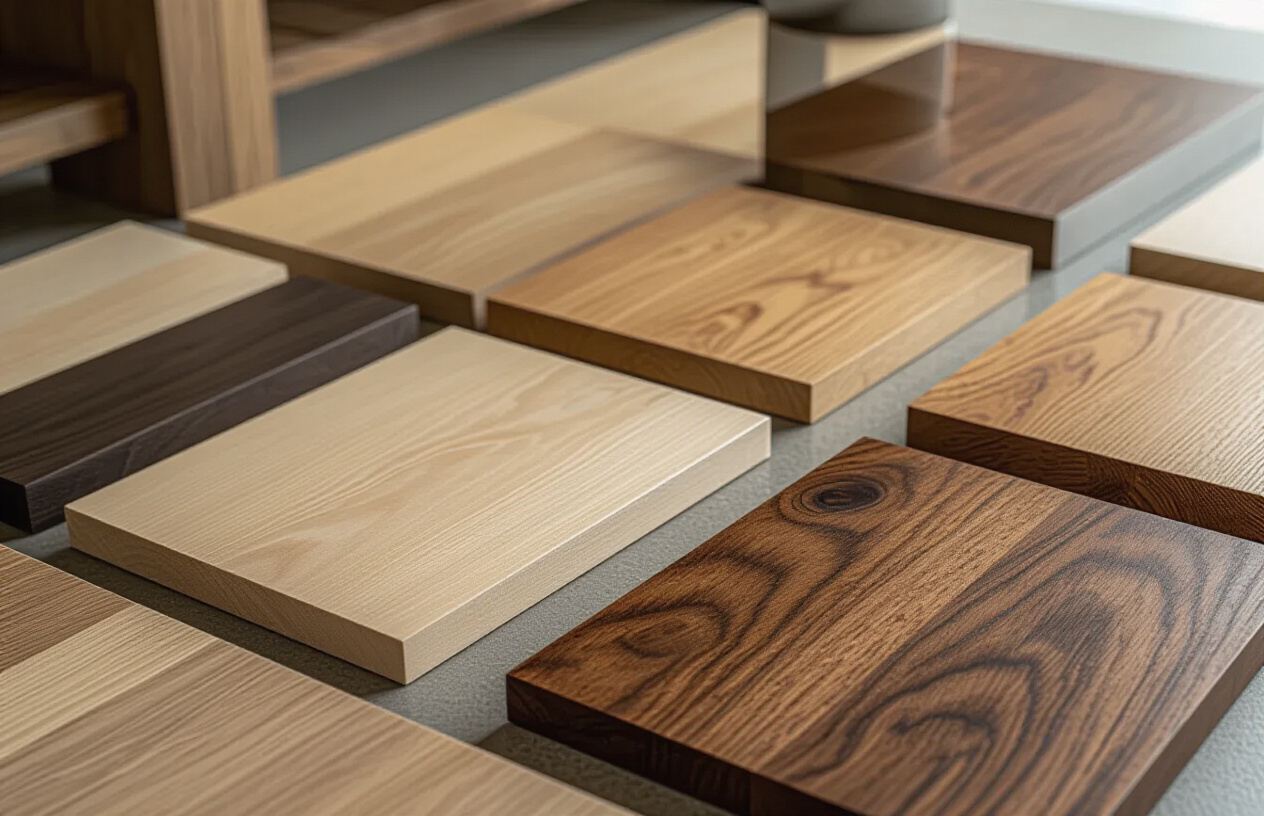
A. Popularity of Light-Toned Woods and Bleached Finishes
Walk into any high-end furniture showroom today and you’ll notice something immediately—light woods are everywhere. Ash, maple, and especially white oak have pushed darker species like walnut and mahogany to the sidelines.
Designers are going crazy for these lighter tones because they bring an airy, spacious feel to interiors. The Nordic-inspired minimalism that took over our Instagram feeds a few years ago? It’s still going strong in the veneer world.
Bleached finishes have become particularly hot. They strip away the yellow undertones from woods like oak, creating that perfect neutral canvas that works with practically any design scheme. Many manufacturers now offer “natural” finishes that are actually subtly bleached to achieve that sought-after pale look.
What’s driving this trend? Our homes are becoming multifunctional spaces where we want to feel calm and uncluttered. Light veneers reflect more light, making spaces feel bigger and more welcoming—something we’re all craving after spending so much time indoors.
B. Bold Grain Patterns Making a Comeback
Remember when everyone wanted the most uniform, knot-free veneer possible? Those days are gone.
Dramatic grain patterns are back in a big way. Figured maple, burl walnut, and quartersawn oak with its distinctive ray fleck patterns are commanding premium prices again. These statement veneers turn furniture into art pieces—think dramatic bookmatched dining tables and show-stopping wall panels.
The revival of Art Deco and mid-century modern aesthetics has pushed this trend forward. Designers are embracing natural irregularities rather than hiding them. Why? Because in our increasingly digital world, these visible reminders of nature feel authentic and grounding.
What’s interesting is how these bold grains are being paired with simple, clean-lined furniture forms. The contrast between minimalist silhouettes and maximalist wood grain creates that perfect tension that makes a piece memorable.
C. Charred and Weathered Veneer Finishes
The Japanese technique of Shou Sugi Ban (charring wood surfaces) has exploded in popularity for veneer applications. This ancient preservation method creates a dramatic blackened surface with enhanced grain definition that’s impossible to ignore.
Not just a visual statement, these charred veneers are naturally resistant to moisture, insects, and decay—making them practical choices for high-use areas. The technique has evolved beyond pure black to include various levels of charring that reveal subtle color variations.
At the other end of the spectrum, weathered and distressed veneers that mimic reclaimed wood continue to gain traction. These finishes tell a story and bring warmth to modern spaces that might otherwise feel cold or sterile.
What’s particularly clever about these worn finishes is that they’re being applied to premium-grade veneers—giving you the best of both worlds: the character of aged wood with the stability and sustainability of modern veneer technology.
Technological Advancements in Veneer Production
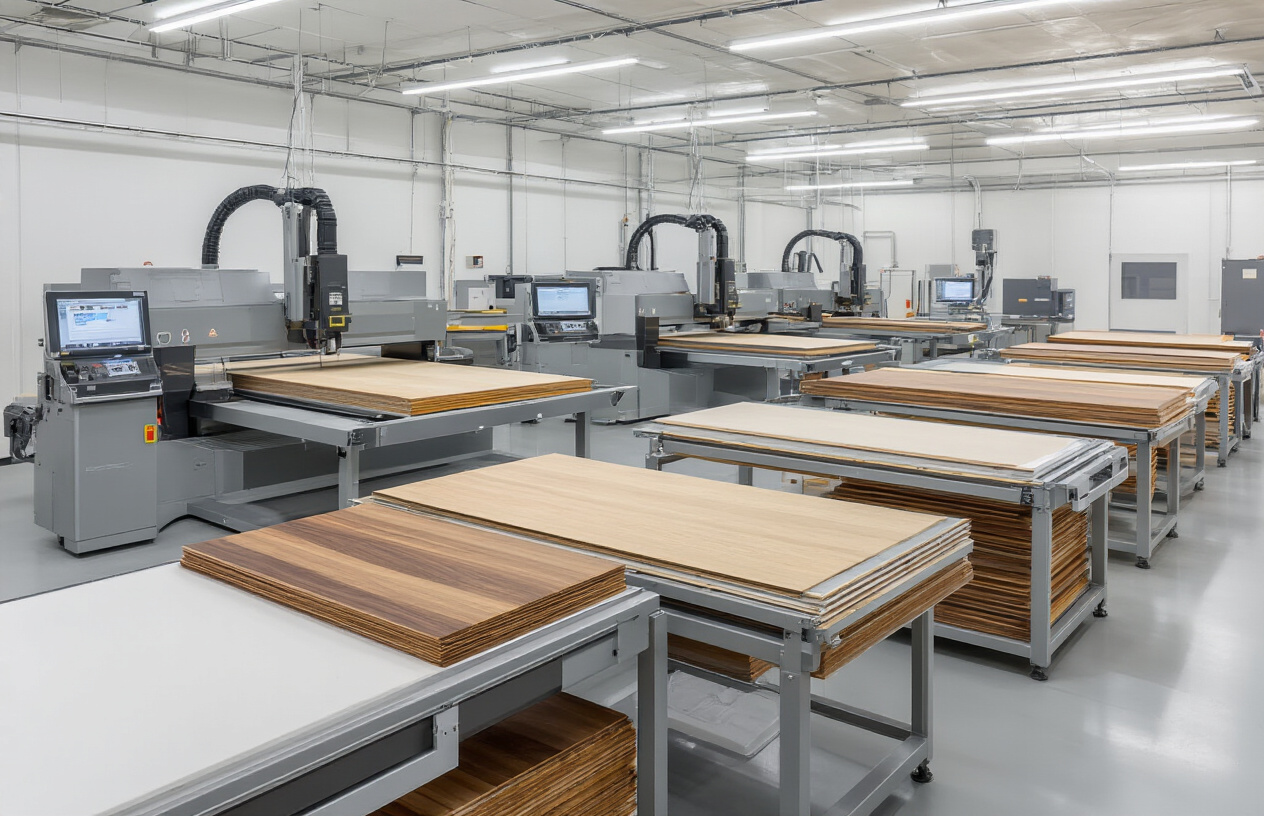
Digital Printing on Natural Veneers
Gone are the days when veneers were limited to their natural appearance. Digital printing technology has revolutionized what’s possible with wood veneers. Manufacturers can now print intricate designs, patterns, and even photographic images directly onto natural veneer surfaces while preserving the authentic wood texture beneath.
The magic happens when high-resolution printing meets the unique grain patterns of real wood. The result? Custom-designed furniture pieces that maintain the warmth of natural wood while featuring personalized graphics or branding. Furniture designers are embracing this technology to create statement pieces that simply weren’t possible five years ago.
What makes this truly exciting is how it’s democratizing custom furniture. Small-batch producers can now offer personalization without massive production runs.
Improved Durability Treatments for High-Traffic Areas
The biggest complaint about veneer furniture has always been durability. But that’s changing fast.
New nano-coating technologies are giving veneers superhero-level protection. These microscopic protective layers bond with the wood at a molecular level, creating surfaces that resist scratches, stains, and even heat damage.
UV-cured finishes have also transformed the game. These treatments harden instantly under ultraviolet light, creating incredibly tough surfaces without the long curing times of traditional finishes. They’re also lower in VOCs, which means they’re better for indoor air quality.
Hospitality and commercial designers are particularly excited about these advances. They can now specify natural veneer furniture in high-traffic areas like hotel lobbies and restaurants where they previously had to compromise with laminates.
Water-Resistant and Outdoor Veneer Solutions
The phrase “veneer outdoor furniture” used to be an oxymoron. Not anymore.
Breakthrough hydrophobic treatments are creating veneers that genuinely repel water rather than just resist it temporarily. These treatments allow the wood to breathe while protecting against moisture damage, mold, and warping.
Some manufacturers have developed composite veneer systems that pair natural wood surfaces with waterproof substrates. This gives you the best of both worlds – the beauty of real wood with the practical benefits of synthetic materials.
The outdoor furniture market has been quick to adopt these innovations. You’ll now find poolside loungers and garden tables featuring veneer surfaces that stand up to the elements surprisingly well.
Precision Cutting Techniques for Complex Patterns
Computer-controlled cutting has taken veneer work from craft to art form.
CNC waterjet and laser cutting systems can now produce veneer pieces with mind-boggling precision – we’re talking tolerances measured in fractions of a millimeter. This allows for intricate inlays and marquetry that would have taken master craftspeople weeks to complete by hand.
The most exciting development is multi-axis cutting technology that can create three-dimensional veneer surfaces. These machines can sculpt veneers with varying depths, creating textured panels and furniture components with tactile appeal.
Furniture designers are using these capabilities to create showstopping pieces with geometric patterns, flowing organic designs, and optical illusions that play with light and shadow across the wood grain.
Veneer Panels in Interior Architecture
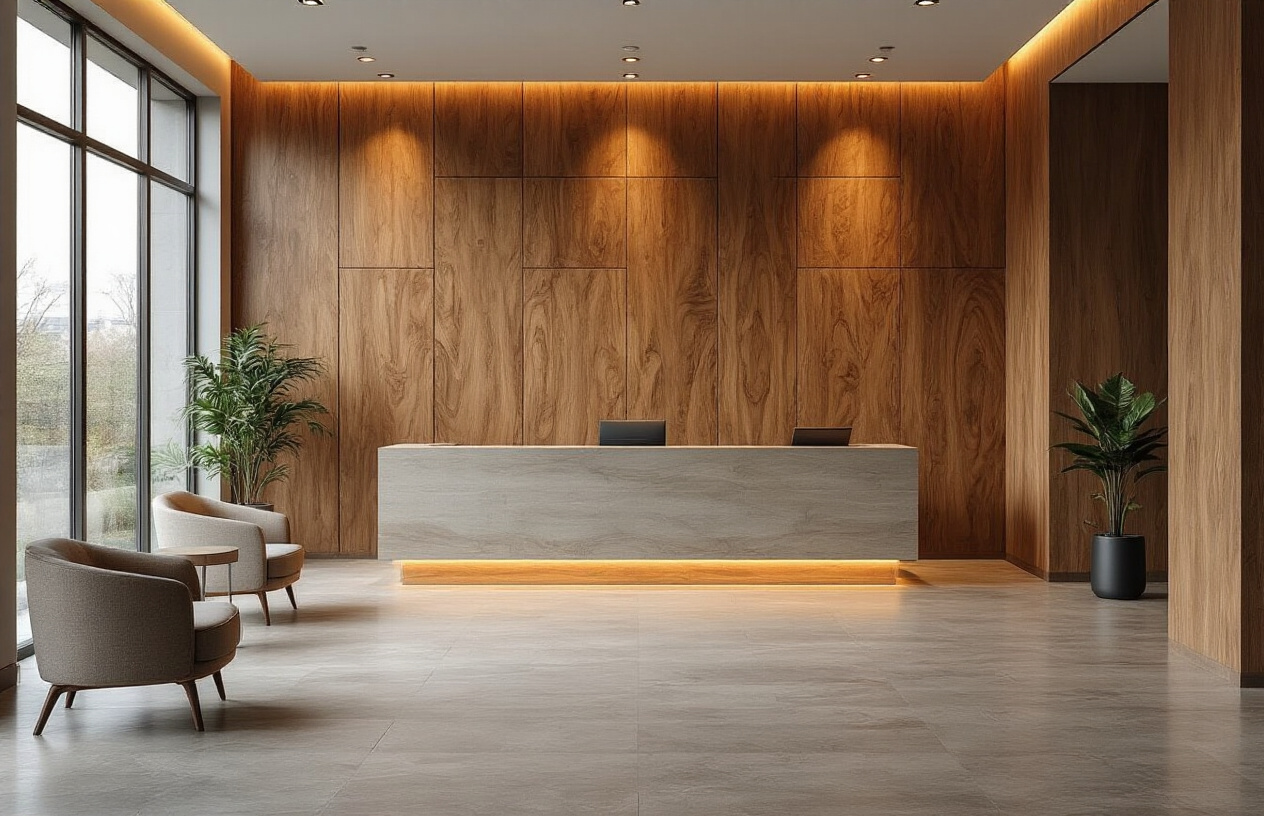
A. Feature Walls and Ceiling Applications
Veneer panels have completely transformed how designers approach feature walls and ceilings. Gone are the days of flat, uninspiring surfaces. Today’s architects are using natural veneers to create stunning focal points that command attention the moment you walk into a room.
What makes these applications so special? It’s the way natural wood grain catches light and adds depth. Each panel tells its own story through unique patterns that synthetic materials simply can’t replicate.
I’ve seen incredible installations where designers wrap veneer panels from walls right up onto ceilings, creating this cocoon-like effect that feels both luxurious and grounding. The continuous wood grain makes spaces feel bigger and more cohesive.
Some designers are playing with geometric patterns, mixing veneer orientations to create optical illusions. Others are using contrast between light and dark veneers to define zones within open floor plans.
The best part? These installations age beautifully. Unlike painted feature walls that need touching up every few years, quality veneer develops character over time. The patina that develops actually enhances the look rather than degrading it.
B. Acoustic Panel Solutions Using Natural Veneers
The struggle is real—beautiful spaces that sound terrible. That’s where acoustic veneer panels come in, solving the echo problem without sacrificing aesthetics.
Modern acoustic veneer panels are engineering marvels. They combine the warmth of natural wood with sophisticated sound-absorbing technology. The result? Spaces that sound as good as they look.
These panels typically feature micro-perforations or slotted designs that trap sound waves while showcasing stunning wood grain. The technical part happens behind the scenes with acoustic backing materials that absorb rather than reflect sound.
Restaurant owners love these panels because customers can actually hear each other talk. Office designers install them to reduce the cognitive drain from constant background noise. Concert halls use them for precise sound control.
The design options have exploded in recent years. You can choose from:
- Linear slat designs with varying gaps
- Custom perforation patterns that form images or logos
- Curved installations that double as sculptural elements
- Combination systems with integrated lighting
The acoustic performance isn’t an afterthought either. Many systems now come with lab-tested NRC (Noise Reduction Coefficient) ratings, so designers can predict exactly how they’ll perform in real-world settings.
C. Movable Veneer Partition Systems for Flexible Spaces
The open floor plan revolution left us with a problem: sometimes you need walls. Movable veneer partition systems offer the perfect compromise between openness and privacy.
These aren’t your grandparents’ folding doors. Today’s systems glide effortlessly on hidden tracks, transforming spaces in seconds. When open, they tuck away discreetly. When closed, they provide the warmth and character of permanent veneer walls.
Commercial spaces have embraced this technology for conference rooms that can expand or contract based on meeting size. Residential designers use them to create multi-functional spaces that adapt to different needs throughout the day.
The veneer finishing makes all the difference. Unlike vinyl or laminate partitions, natural veneer systems bring the organic texture and warmth that makes spaces feel intentional and designed, not temporarily divided.
What’s really impressive is how these systems have improved acoustically. The best ones now offer sound transmission ratings approaching permanent walls, making private conversations actually private.
D. Integrated Lighting Systems with Veneer Panels
Veneer and lighting. Name a more perfect design duo—I’ll wait.
Integrating lighting directly into veneer panels creates magical effects that transform ordinary surfaces into extraordinary experiences. The interaction between light and wood grain produces a warmth that LED panels alone simply can’t match.
Designers are getting creative with how light interacts with veneer:
- Backlit panels where light glows through thinner sections of veneer
- Edge lighting that highlights the perimeter of each panel
- Pinpoint fiber optics that create starry-night effects
- Programmable RGB systems that change the mood throughout the day
The technical aspects have gotten easier too. Many systems now come with plug-and-play components that don’t require specialized electrical knowledge to install.
What’s particularly exciting is how these integrated systems are improving wellbeing. By mimicking natural light patterns, they help maintain healthy circadian rhythms in spaces that might not get adequate natural light.
The sustainability angle can’t be ignored either. When LEDs are built directly into panel systems, they typically last longer and consume less energy than traditional lighting fixtures.
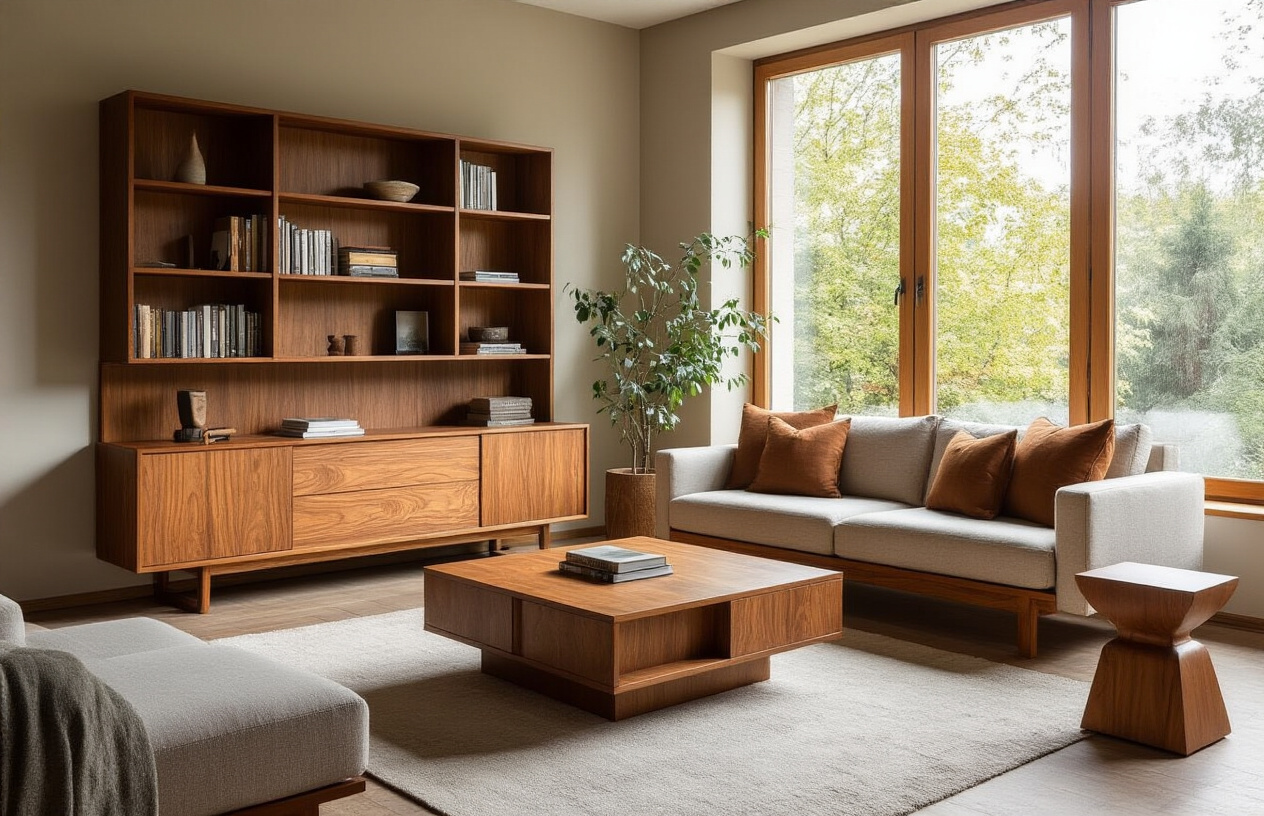
Natural veneer furniture and panels continue to evolve with exciting innovations across the industry. Sustainable sourcing has become paramount, with responsibly harvested woods and reclaimed materials leading the charge. Meanwhile, designers are pushing boundaries with unexpected veneer applications in contemporary furniture while embracing rich, textured finishes and bold color treatments that highlight wood’s natural beauty.
The technological revolution in veneer production has made previously impossible designs achievable through advanced slicing techniques and digital fabrication. As interior architects increasingly incorporate these versatile panels into spaces from feature walls to custom cabinetry, natural veneers remain at the forefront of design—combining timeless organic appeal with modern sustainability practices. Whether you’re a designer, manufacturer, or simply a wood enthusiast, now is the perfect time to explore these innovative applications of nature’s most versatile material.
